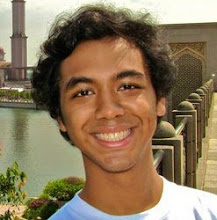Life has been extremely good to me. Right now, I am currently on a long holiday. I’ve had 3 weeks and I still have another 3 ahead. If the absolute number is not that spectacular, let me put it in perspective. Other unis, especially the med schools, have shorter holidays than I do; in fact, some of them only get two weeks of time off. However, holidays are but facts of life. I need something more, something monumental. Thus, to top my happiness, I had the privilege to be a part of Asian Medical Students’ Conference (AMSC) 2010 in Jakarta Indonesia.
AMSC2010 is held by Asian Medical Students’ Association (AMSA) chapters of University of Indonesia (UI) and Pelita Harapan University (UPH). It was a week-long conference, from July 25 to July 31, with Geriatrics as its main theme. Participants come from countries with local AMSA, most of them in Asia. In Jakarta, they are treated to a vast array of scientific, social, and cultural activities; not to mention the opportunity to build connections and, most importantly, friendship. Many submitted their entries for the paper, poster, photo, and movie competitions; all of them are wonderful, some emerged as winners.
From Southeast Asia, there were delegates representing Indonesia, Singapore, Malaysia, Thailand, and Cambodia. Other Asian countries in the conference are Japan, Korea, China, Taiwan, Hong Kong, Mongolia, Nepal, Bangladesh, and Palestine. Additionally, we were more than happy to welcome delegates from Australia, Ukraine, and the United Kingdom.
So what makes the title of this post?
It comes from my personal experience during the conference. First, the conference required me to be in parts of Greater Jakarta I have never known that well. If it wasn’t for AMSC, I would’ve never been to UPH’s campus in Karawaci. The second day took place in Sapta Pesona building, which is the office of Tourism Ministry and in the Balai Kota for dinner. I knew the places, but that was the first time I went there. On the third day, I accompanied delegates to Kelapa Gading Mal, a giant hunk of a supermall made up of 5 malls. I’m not familiar with the mall, so it kinda felt like trapping them into a maze. And the most surprising discovery is…that there is a nursing home for the elderly very near to my house and I’ve been passing the location for as long as I’ve lived. I have to thank the organizers of the social visit.
Second, I was trained to see Jakarta in a very different light. While following the delegates everywhere, sometimes they ask me about the things they see: traffic jams, huge shopping malls, the capricious weather, strange foods, and all the little bits. I’ve been to Australia, Singapore, Malaysia, Thailand, Hong Kong, and the UK so I can see where the question comes from. For example, the girls are just blown away by the sheer number of shopping malls in the city because Australia simply does not have half as many. On the other hand, I gained new insights from other delegates like Mongolia, Bangladesh, and Nepal.
Last, there was a lot of movement. My house is in South Jakarta, almost at the southern tip of the province. Each morning, I have to outrun the delegates to the venue of that day. After the day is done, I tag along as they return to Mercure Hotel in Ancol. Ancol is in the very north of Jakarta. Heck, the hotel is by the beach! Not less than 3 times did I ride a taxi from north to south, at midnight the earliest. I once got home at 2AM and had to wake up again at 5AM.
Despite the ‘hardship’ I had to endure, AMSC is truly an unforgettable experience. New friends, great times, amazing activities, and tons of fun! Thanks to Facebook, it is even easier to keep in touch with people from all corners of the shrinking globe. I was in a deluge of friend requests, comments, and photo tags. Nothing more I could ask.

















